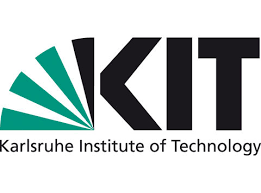Karlsruhe Institute of Technology: On the trail of neutrinos with virtual reality
Through virtual reality, the physical inner workings of the international large-scale experiment KATRIN at the Karlsruhe Institute of Technology (KIT) can now be explored by everyone. During the virtual experience, visitors can find out how KATRIN works and, thanks to interactive elements, even experiment themselves. The VR environment was created in cooperation with the National Institute for Science Communication (NaWik). The public and the media are invited to the online presentation on July 7, 2021 at 5:00 p.m. (registration: scheuermann ∂nawik de )
Neutrinos are the lightest, most frequent, but also the most puzzling mass-bearing particles in our universe. They are electrically neutral and only interact with their environment via gravity and the so-called weak force. Until recently, neutrinos were described as massless particles in the Standard Model of particle physics. However, observations of atmospheric and solar neutrinos have shown in recent years that neutrinos have a small mass. The size of the mass is still unknown. With the Karlsruhe Tritium Neutrino Experiment (KATRIN), researchers want to precisely determine the mass of these puzzling particles for the first time. This requires, among other things, a high-resolution spectrometer with a large diameter (ten meters).
Novel VR environment makes large-scale experiments more accessible
Large-scale experiments in basic research such as KATRIN are usually hardly accessible to the public. This is due to the special purity requirements and safety regulations – and of course also to the fact that the ongoing experiments must not be disturbed. Now a virtual reality application opens up new possibilities for experience. The users get a direct insight into the interior of the research facility and learn how the elementary particles move and behave in this large experimental setup. In addition, the application also offers the option of slipping into the role of a scientist and interacting with the experiment – for example by changing measurement variables in virtual operation.
Future application in teaching planned
The novel VR application was developed in the Science In Presentations research project at NaWik in cooperation with KIT and is funded by the Klaus Tschira Foundation. It combines photo-realistic 360-degree views of the KATRIN experiment setup with a virtual plane. The application consists of a guided section in which, similar to a tour, a scientist explains the facility and his or her own research, as well as the subsequent opportunity to explore the facility on your own. There, other KATRIN researchers will report even more about the functionality and goals of the unique experiment. The VR application runs in the browser and can either be used with its own head-mounted display (“VR glasses”) or alternatively on a tablet, laptop or PC.
In the future, the VR environment will also be used in teaching at KIT. It is currently being further developed by NaWik and the KIT Center for Elementary Particles and Astroparticle Physics (KCETA). The project is financed with funds from the KIT “Research Infrastructures in Research-Oriented Teaching” as part of the excellence strategy of the federal and state governments.

